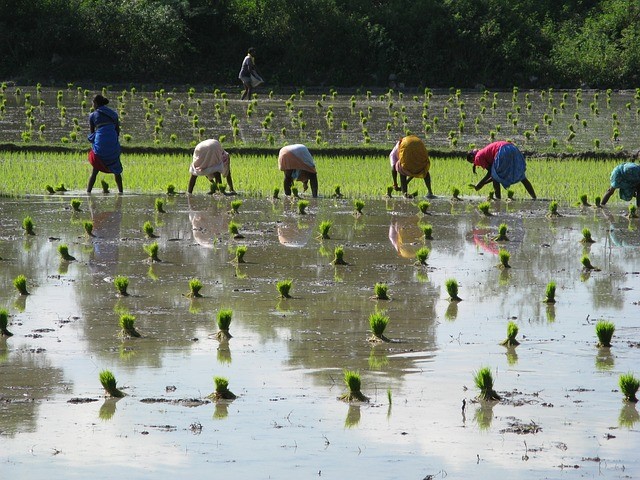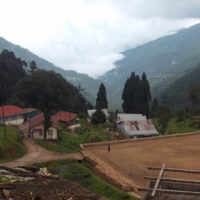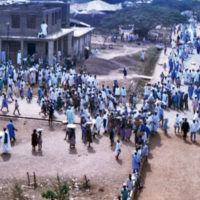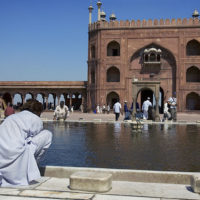SOUTH ASIA – Sometimes, things just don’t make sense – until we dig a little deeper.
For instance, this reporter has had difficulty reconciling two storylines about farmers that have been coming out of South Asia for the past year or more.

Two storylines: Farmers and India’s water crisis
The first involves a trend to blame the growing water crisis on the fact that farmers use 80 percent of the available groundwater to irrigate their crops. This is blamed for a shortage of water for the remaining population and, specifically, for the 600 million currently experiencing extreme water stress.
The second is the recurring back-page stories of farmers, particularly in northern India, committing suicide. The farmers don’t seem to be lacking for water, but they are being blamed by some as the reason that others are going without. Also, no one seems to be hindering farmers from using all the water they need. Without water, many of India’s most important crops could not be grown – crops that feed the country and that provide an abundance of revenue through exportation.
The challenge farmers face at all times
Whether it is South Asia or South Carolina, the biggest challenge for farmers is being able to make a profit on the sale of their crops at harvest. Farmers in Indiana are no different than farmers in India. If they cannot harvest their crop or gain a reasonable return on the sale of it, they face the fears of foreclosure and being unable to feed their families.
Farmers must, therefore, grow the crops that keep their families fed and their farms functioning. Determining what to grow is sometimes a difficult choice. Making the wrong choice has left some farmers destitute. It is not a giant leap from poverty to hopelessness, nor is it from desperation to suicide.
The dilemma farmers face in the water crisis
According to Live Mint, “This growing demand for water is almost entirely driven by farmers. Nowhere in the world does agriculture consume as much water as in South Asia. This reliance on water has made the region one of the most water-scarce places in the world. In India itself, more than 80% of water demand is used for farming.”
Also, the Observer Research Foundation noted that “The most important crops of India — rice, wheat, and sugarcane, are the most water-consuming crops.”
Logic would seem to suggest that South Asian farmers should grow crops that consume much less water. But that logic does not work from the farmers’ perspective. What is worse, farmers get blamed for contributing to the water crisis.
Agricultural officials have been offering discounted seeds and subsidies to encourage farmers to switch from the profitable rice, wheat, and sugarcane to growing corn or other less water-intensive crops.
The damage farmers suffer from this solution
It only takes one season for a farmer who has converted to growing corn, sunflowers, and mustard to realize that the right crops to grow are the ones on which they can make a profit on the sale of their crops at harvest (see ¶ 4).
The fact is that the demand for alternative crops is not even close to the need for rice, wheat, and sugarcane. Farmers are lucky to sell half of the sunflower seed yield and often are forced to sell what they can well below the minimum supported price. And so, begins a downward spiral into despair if a farmer continues to try to grow crops not suited to the local conditions.
Then again, crops like rice are much more durable. A herd of nilgai (a large Asian antelope indigenous to South Asia) will unintentionally destroy a cornfield just by walking through it. On the other hand, damage, if any, to rice growing in a paddy would be negligible. Another reason to stick with rice.
The problem of public perception that farmers face during the water crisis
When anyone says they collectively use 80% of South Asia’s water, it sounds like the farmers are the cause of the crisis. The deeper one digs into the facts – of which we have just scratched the surface – the more one realizes that the farmers are not the reason for the crisis.
Their dilemma is that they are accursed if they continue to farm the monsoon crops because they are held at blame. Other crops do not have either the demand or the return on investment that they have reaped from the monsoon crops. If their crops fail, their farms fold and their families flounder in poverty. It’s enough to drive some to suicide.
Please pray for the people of South Asia. They are faced with multiple and often interconnected crises that only the Creator of Heaven and Earth can resolve. It may be that, if they call upon Him, they may be able to say,
“Though the fig tree may not blossom, nor fruit be on the vines; Though the labor of the olive may fail, And the fields yield no food; Though the flock may be cut off from the fold, and there be no herd in the stalls–
“Yet I will rejoice in the LORD, I will joy in the God of my salvation.
“The LORD God is my strength; He will make my feet like deer’s [feet], And He will make me walk on my high hills. To the Chief Musician. With my stringed instruments.” Habakkuk 3:17-19
To read more news on India’s Water Crisis on Missions Box, go here.
- Bloomberg Quint, India’s Water Crisis: Focus on Rice Cultivation Deepens Water Crisis Across Northern States
- Live Mint, The roots of India’s deepening rural water crisis
- India Water Portal, Water scarcity leading farmers to suicide
- Observer Research Foundation, India’s water crisis: A permanent problem which needs permanent solutions
- Gospel for Asia, The Global Clean Water Crisis & Dying of Thirst
For more information about this, click here.




